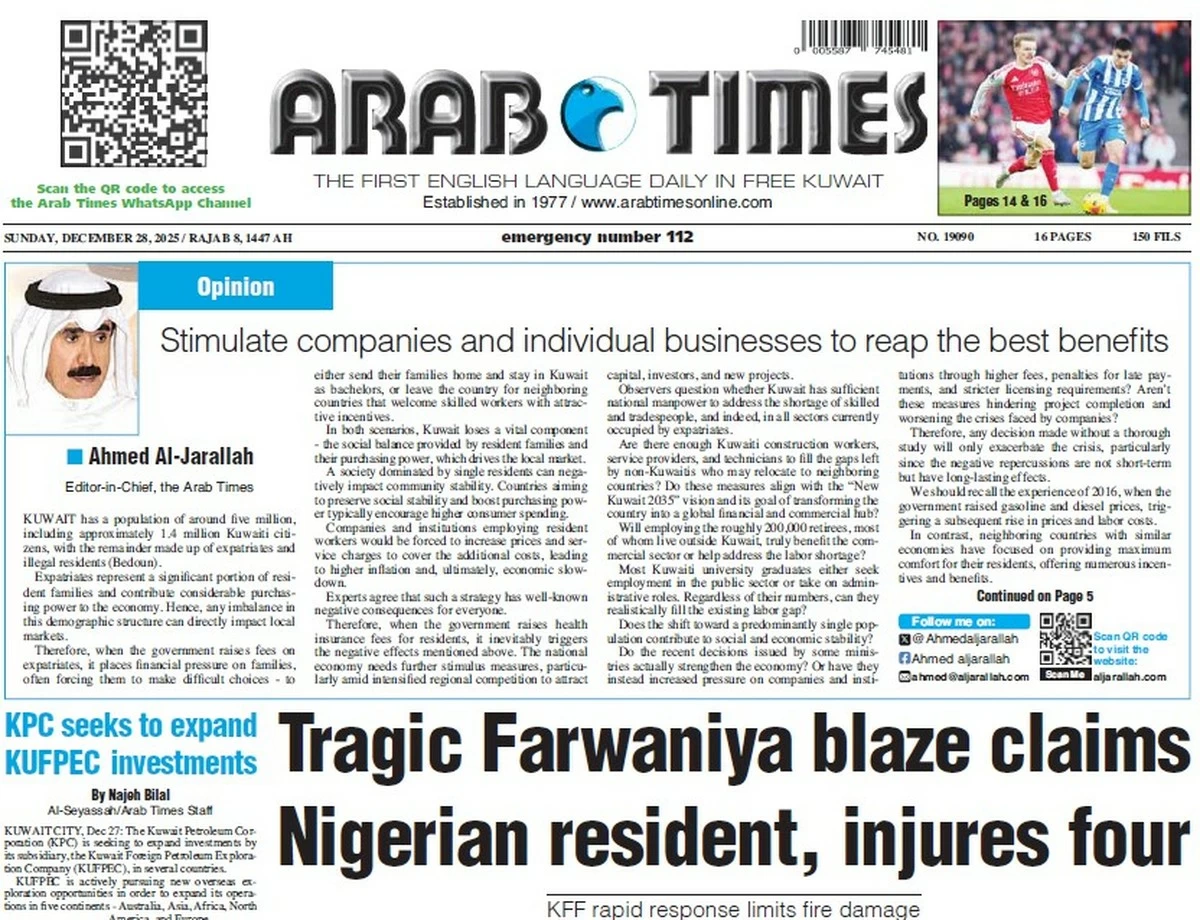02/05/2019
02/05/2019
KUWAIT CITY, May 2, (KUNA): Moody’s Investors Service (Moody’s) has Thursday affirmed Government of Kuwait’s long-term issuer ratings at Aa2, with a stable outlook.
In a report, Moody’s said its rating affirmation is underpinned by view that Kuwait’s exceptionally large wealth, with sovereign wealth fund assets estimated at around 370 percent of GDP and vast hydrocarbon reserves, will continue to support the sovereign’s fiscal strength and creditworthiness.
The stable outlook reflects Moody’s expectation that Kuwait’s extremely high fiscal strength will be largely preserved through oil price fluctuations and long-term demographic pressure.
In particular, it assumes that the authorities overcome the current legislative hurdles and pass a debt law that allows the government to finance its deficit without depleting its most liquid assets.
Kuwait’s long-term and short-term foreign-currency bond and deposit ceilings remain unchanged at Aa2 and Prime-1, respectively. Kuwait’s long-term local-currency bond and deposit ceilings also remains unchanged at Aa2, the report added. It carried on saying that Kuwait’s fiscal position is one of the strongest among the sovereigns rated by Moody’s.
Although the government will likely continue to run large fiscal deficits, under Moody’s assumptions that oil prices fluctuate between $50- 70/barrel in the medium term and that these deficits will lead to a gradual increase in the debt burden, it will be from a very low base. And while, in the near term at least, the deficits will be financed by drawdowns from the General Reserve Fund (GRF), the country will continue to accumulate wealth in the Future Generations Fund (FGF) which forms the majority of the country’s SWF assets, reflected in broadly stable SWF assets relative to GDP at extremely high levels.
Moody’s estimates that the budget deficit (post-FGF transfers, excluding investment income) narrowed to 5.2 percent of GDP in the fiscal year 2018/19 due to windfall oil revenues from higher than budgeted oil prices, which averaged $71/barrel in 2018. In the last two years, higher oil prices coincided with diminished reform momentum.
At the moment, the deficits are fully financed through drawdowns of the GRF, which Moody’s estimates has been reduced to 54 percent of GDP as of March 2019, compared to 70 percent of GDP in March 2018, with the liquid portion of the GRF comprising around two-thirds of total assets. Without legal authorization to issue new debt, the deficits will continue to be financed from the GRF, which will shrink further. Moody’s expects that the fund will decline to 26 percent of GDP by the end of fiscal year 2020/21.
However, Moody’s assumes that, as the GRF’s size diminishes rapidly, Kuwait will pass a debt law allowing the issuance of new debt. As a result, Moody’s projects gross government debt to rise 38.8 percent of GDP by fiscal year 2023/24, from 13.8 percent at the end of fiscal year 2018/19. Still, at these levels, Kuwait’s government debt burden would remain below the Aarated median, and its debt affordability would remain significantly stronger than that of most Aa-rated peers.
Moreover, while the GRF is eroded and gross government debt will rise if legislation is passed, Kuwait continues to accumulate 10 percent of its government revenue and all investment income in the FGF, whose assets are estimated at USD 442 billion, maintaining the overall SWF assets broadly stable in relation to GDP.
Additionally, Kuwait’s low external breakeven, which Moody’s estimates at around $51/barrel, will ensure that the country continues to accrue wealth through sustained current account surpluses under our $50-70/barrel oil price range assumption.
The country’s hydrocarbon reserves are plentiful and at the current rate of production, proven reserves of oil and gas would last around 90 years, providing a significant source of wealth for the foreseeable future. The stable outlook reflects Moody’s expectation that Kuwait’s extremely high fiscal strength will be largely preserved through most plausible scenarios. This wealth provides ample capacity and time to absorb potential shocks, in the short to medium term related to oil price fluctuations and, in the longer term, related to demographic pressure on demand for employment.


